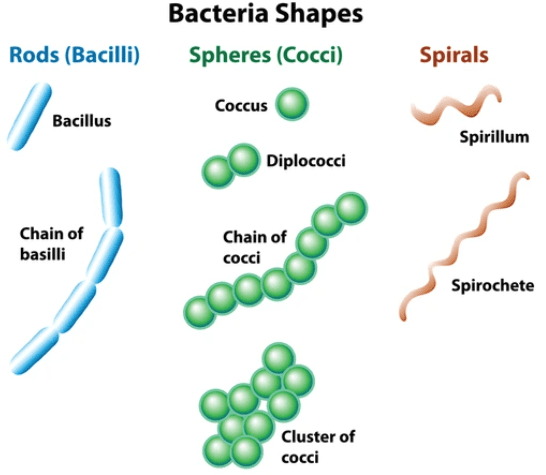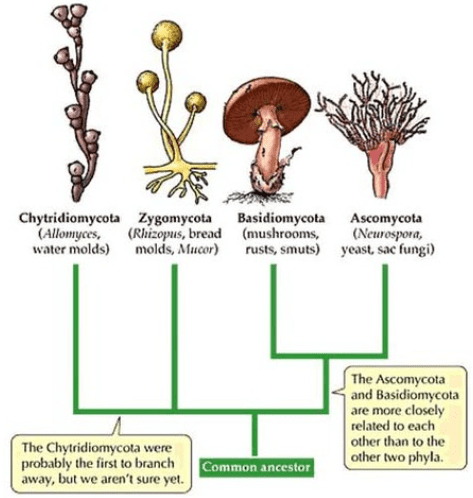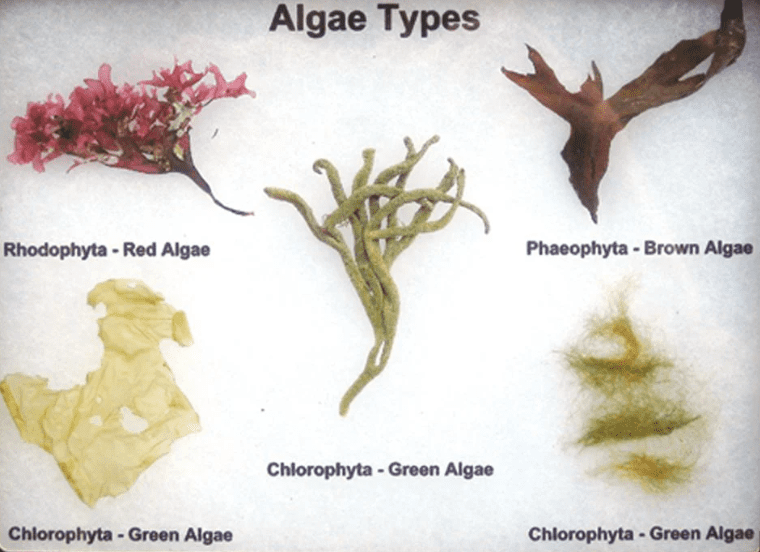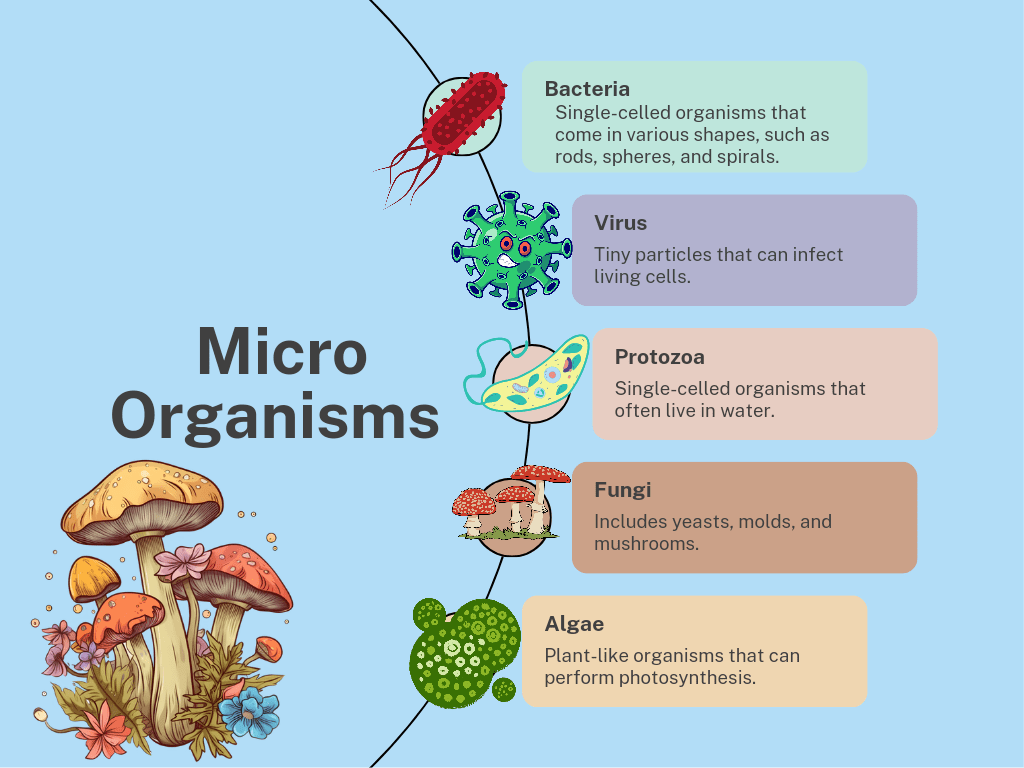Microorganisms: Friend and Foe
A comprehensive guide to understanding microorganisms as both beneficial partners and harmful agents in our world
Introduction to Microorganisms
Microorganisms, often simply called microbes, are tiny living organisms that are invisible to the naked eye and can only be seen under a microscope. Despite their small size, microbes are incredibly diverse and exist in virtually every habitat on Earth, from the deepest ocean trenches to the highest mountains, and even within our bodies.
What makes microorganisms unique?
Though invisible to us, microorganisms make up the majority of the Earth’s biomass and represent the oldest form of life on our planet, dating back over 3.5 billion years.

Various types of microorganisms as seen under an electron microscope
These microscopic organisms play crucial roles in maintaining ecological balance, supporting human health, and contributing to numerous industrial processes. However, they can also cause diseases and spoilage. Understanding the dual nature of microorganisms – as both friends and foes – is essential for harnessing their benefits while mitigating their potential harms.
Types of Microorganisms
Microorganisms are classified into several major groups based on their cellular structure, genetics, and biochemical properties:
Bacteria

Single-celled prokaryotes lacking a defined nucleus and organelles. They have a wide range of shapes (cocci, bacilli, spirilla) and metabolic capabilities.
Viruses

Non-cellular infectious agents that consist of genetic material (DNA or RNA) encased in a protein coat. They require host cells to replicate.
Fungi

Eukaryotic organisms that include yeasts, molds, and mushrooms. They have cell walls made of chitin and absorb nutrients from their environment.
Protozoa

Single-celled eukaryotes that move and feed on organic matter. Examples include amoebas, paramecium, and giardia.
Algae

Photosynthetic eukaryotes that range from unicellular microorganisms to large seaweeds. They are important primary producers in aquatic ecosystems.
| Characteristic | Bacteria | Viruses | Fungi | Protozoa | Algae |
|---|---|---|---|---|---|
| Cell Type | Prokaryotic | Non-cellular | Eukaryotic | Eukaryotic | Eukaryotic |
| Size | 0.2-2.0 μm | 20-400 nm | 2-10 μm (yeasts) Larger for filamentous forms |
10-50 μm | Varies widely |
| Reproduction | Binary fission | Replication in host cells | Budding, spores, fragmentation | Binary fission, multiple fission | Various methods |
| Nutrition | Heterotrophic or autotrophic | Obligate parasites | Absorptive heterotrophs | Heterotrophic | Photosynthetic autotrophs |
| Example Genera | Escherichia, Bacillus, Lactobacillus | Influenza, SARS-CoV-2, HIV | Saccharomyces, Aspergillus, Penicillium | Amoeba, Paramecium, Plasmodium | Chlorella, Spirogyra, Chlamydomonas |
Microorganisms as Friends
Despite their reputation for causing diseases, the vast majority of microorganisms are beneficial or harmless to humans. They play essential roles in numerous biological processes and have been harnessed for various applications:
Food Production
Microorganisms have been used in food preparation for thousands of years, contributing unique flavors, textures, and preservative effects.
Examples of microbial food products:
- Dairy products: Yogurt (Lactobacillus, Streptococcus), cheese (various bacteria and fungi), kefir (bacteria and yeasts)
- Bread: Yeast (Saccharomyces cerevisiae) fermentation provides leavening
- Fermented beverages: Beer, wine (yeast fermentation), kombucha (bacteria and yeast)
- Fermented vegetables: Sauerkraut, kimchi, pickles (lactic acid bacteria)
- Soy products: Tempeh, soy sauce, miso (bacteria and fungi)
- Vinegar: Produced by Acetobacter bacteria
Probiotic Benefits
Many fermented foods contain probiotics – live microorganisms that provide health benefits when consumed in adequate amounts. These include improved digestion, enhanced immune function, and potential protection against certain diseases.
Medicine and Biotechnology
Microorganisms have revolutionized medicine through the production of various therapeutic compounds and technologies:
Antibiotics
Many antibiotics are produced by microorganisms as natural defense mechanisms:
- Penicillin (from Penicillium fungi)
- Streptomycin (from Streptomyces bacteria)
- Tetracycline (from Streptomyces bacteria)
- Erythromycin (from Saccharopolyspora bacteria)
Vaccines
Vaccines often use attenuated or inactivated microorganisms to stimulate immunity:
- Smallpox vaccine (first successful vaccine)
- Polio vaccine
- Measles, mumps, and rubella (MMR) vaccine
- Tuberculosis (BCG) vaccine
Biotechnology Applications
- Insulin production: Genetically engineered E. coli bacteria produce human insulin for diabetic patients
- Enzyme production: Industrial enzymes for detergents, food processing, and biofuels
- Gene therapy: Modified viruses as vectors to deliver therapeutic genes
- Diagnostic tools: PCR and other molecular techniques for disease detection
- Bioremediation: Using microbes to clean up environmental pollutants
Agriculture and Environment
Microorganisms play crucial roles in soil fertility, plant growth, and environmental cycling:
Nitrogen Fixation
Some bacteria can convert atmospheric nitrogen into forms plants can use:
- Rhizobium bacteria form symbiotic relationships with legumes (beans, peas, clover)
- Azotobacter and Azospirillum are free-living nitrogen-fixing bacteria
- Cyanobacteria fix nitrogen in aquatic environments and some soils
Soil Health and Cycling
Microorganisms decompose organic matter and cycle nutrients:
- Decomposition of plant and animal matter
- Carbon, nitrogen, phosphorus, and sulfur cycling
- Mycorrhizal fungi form symbiotic relationships with plant roots, enhancing nutrient uptake
- Production of growth-promoting compounds
Environmental Applications
- Bioremediation: Using microbes to break down pollutants like oil spills, pesticides, and industrial chemicals
- Wastewater treatment: Bacteria degrade organic matter in sewage treatment plants
- Composting: Microbial decomposition converts organic waste into valuable soil amendments
- Biocontrol: Using beneficial microbes to control plant pests and diseases
Sustainable Agriculture
Microbial biofertilizers and biopesticides are increasingly being used as eco-friendly alternatives to chemical products, promoting sustainable agriculture and reducing environmental impact.
Industrial Applications
Beyond food and medicine, microorganisms contribute to various industrial processes:
- Biofuels: Production of ethanol, biodiesel, and biogas through microbial fermentation
- Industrial enzymes: Amylases, proteases, lipases used in detergents, textile processing, paper production, and more
- Biopolymers: Microbial production of biodegradable plastics like PHA (polyhydroxyalkanoates)
- Mining: Bioleaching uses microbes to extract metals from low-grade ores
- Bioreactors: Large-scale production of valuable compounds using microorganisms
Microorganisms as Foes
Despite their many benefits, some microorganisms can cause significant harm to humans, animals, plants, and even industrial processes:
Human and Animal Diseases
Pathogenic microorganisms can cause a wide range of infections and diseases:
| Type of Microorganism | Examples of Pathogens | Diseases Caused |
|---|---|---|
| Bacteria | Mycobacterium tuberculosis Escherichia coli Streptococcus pneumoniae Salmonella typhi |
Tuberculosis Food poisoning, UTIs Pneumonia Typhoid fever |
| Viruses | Influenza virus SARS-CoV-2 HIV Hepatitis viruses |
Flu COVID-19 AIDS Hepatitis |
| Fungi | Candida albicans Aspergillus Trichophyton Cryptococcus |
Candidiasis Aspergillosis Ringworm, athlete’s foot Cryptococcosis |
| Protozoa | Plasmodium Entamoeba histolytica Toxoplasma gondii Giardia lamblia |
Malaria Amoebiasis Toxoplasmosis Giardiasis |
| Prions | PrPSc | Creutzfeldt-Jakob disease, BSE (mad cow disease) |
Disease Transmission
Pathogenic microorganisms can be transmitted through various routes:
- Airborne transmission: Through respiratory droplets (flu, COVID-19, tuberculosis)
- Waterborne transmission: Contaminated water (cholera, giardiasis, typhoid)
- Foodborne transmission: Contaminated food (salmonellosis, E. coli infection)
- Vector-borne transmission: Via insects or animals (malaria, Lyme disease, rabies)
- Direct contact: Person-to-person (cold sores, ringworm, impetigo)
- Fomites: Contaminated objects (norovirus, rhinovirus)
Antimicrobial Resistance
The overuse and misuse of antibiotics have led to the emergence of antibiotic-resistant bacteria, which pose a serious global health threat. Examples include Methicillin-resistant Staphylococcus aureus (MRSA), multidrug-resistant tuberculosis, and carbapenem-resistant Enterobacteriaceae.
Plant Diseases
Plant pathogens cause significant agricultural losses worldwide:
Bacterial Plant Diseases
- Citrus canker (Xanthomonas citri)
- Fire blight (Erwinia amylovora)
- Bacterial wilt (Ralstonia solanacearum)
- Crown gall (Agrobacterium tumefaciens)
Fungal Plant Diseases
- Powdery mildew (various fungi)
- Rice blast (Magnaporthe oryzae)
- Dutch elm disease (Ophiostoma ulmi)
- Late blight of potato (Phytophthora infestans)
Historical Impact
The Irish Potato Famine (1845-1849) was caused by the fungus Phytophthora infestans, which destroyed potato crops across Ireland. This devastating plant disease led to approximately one million deaths from starvation and forced another million people to emigrate, forever changing Irish history and demographics.
Food Spoilage and Biodegradation
While decomposition is beneficial in nature, microorganisms can cause unwanted degradation of food and materials:
Food Spoilage
- Mold growth on bread and fruits
- Souring of milk by lactic acid bacteria
- Rancidity in fats and oils
- Fermentation of sugars causing gas production
- Production of off-flavors and odors
Material Biodegradation
- Wood decay by fungi (dry rot, wet rot)
- Mildew damage to fabrics and paper
- Corrosion of metals by acid-producing bacteria
- Degradation of concrete by sulfur-oxidizing bacteria
- Biofouling of equipment and pipes
Food Preservation Methods
Various methods have been developed to control microbial growth and prevent food spoilage:
- Thermal processing: Pasteurization, sterilization, cooking
- Refrigeration and freezing: Low temperatures slow microbial growth
- Dehydration: Removing water inhibits microbial activity
- Chemical preservatives: Salt, sugar, acids, nitrites
- Modified atmosphere packaging: Altering gas composition to inhibit spoilage organisms
- Fermentation: Using beneficial microbes to outcompete harmful ones
- Irradiation: Using radiation to kill microorganisms
Controlling Microorganisms
Understanding how to control microbial growth is essential for preventing infections, preserving food, and maintaining hygiene:
Physical Methods
- Heat: Sterilization (121°C under pressure), pasteurization (72°C for 15 seconds)
- Cold: Refrigeration (4°C), freezing (-18°C or lower)
- Desiccation/Dehydration: Removing water necessary for growth
- Filtration: HEPA filters, membrane filters for liquids
- Radiation: UV light, gamma radiation, X-rays
- High pressure: Pressure processing for food preservation
Chemical Methods
- Disinfectants: Chlorine compounds, quaternary ammonium compounds
- Antiseptics: Alcohol, hydrogen peroxide, iodine
- Antibiotics: Targeting specific pathogens
- Preservatives: Sorbic acid, benzoic acid, nitrites
- Acids and bases: Creating unfavorable pH conditions
- Osmotic pressure: Salt, sugar to draw water out of cells
Biological Methods
- Competitive exclusion: Introducing beneficial microbes that outcompete pathogens
- Bacteriophages: Viruses that specifically attack bacteria
- Probiotics: Live beneficial bacteria that confer health benefits
- Bacteriocins: Antimicrobial peptides produced by bacteria
Antimicrobial Stewardship
The responsible use of antimicrobial agents is crucial to prevent the development of resistance. This includes using antibiotics only when necessary, completing prescribed courses, and implementing infection prevention measures.
Fascinating Microbial Facts
The human body contains more microbial cells (approx. 38 trillion) than human cells (approx. 30 trillion), making us effectively a walking ecosystem.
A single teaspoon of soil can contain up to one billion bacteria, several yards of fungal filaments, and thousands of protozoa.
Bacteria can divide every 20 minutes under optimal conditions, potentially creating 16 million descendants in just 8 hours.
Some extremophile microorganisms can survive in environments considered inhospitable to life, including boiling hot springs, deep-sea hydrothermal vents, and highly acidic mine drainage.
The bacterium Deinococcus radiodurans can survive radiation levels 1,000 times greater than would kill a human, earning it the nickname “Conan the Bacterium.”
The oldest viable microorganisms were found in 250-million-year-old salt crystals, demonstrating the remarkable longevity of bacterial spores.
Conclusion
Microorganisms represent a fascinating duality in our world – they are both indispensable allies and formidable adversaries. The overwhelming majority of microbes benefit humanity and the planet through their roles in nutrient cycling, food production, medicine, and countless industrial applications.
At the same time, we must respect the potential danger posed by pathogenic microorganisms, which continue to cause disease and mortality worldwide. Our relationship with the microbial world is complex and evolving, especially as new challenges like antimicrobial resistance emerge.
The future of microbiology holds tremendous promise, with advances in genetic engineering, synthetic biology, and microbial ecology opening new frontiers for harnessing beneficial microbes while developing innovative strategies to combat harmful ones.
By understanding and appreciating the dual nature of microorganisms as both friends and foes, we can continue to develop sustainable, beneficial relationships with these invisible yet incredibly influential life forms.
Key Takeaways
- Microorganisms are the most abundant and diverse life forms on Earth, playing crucial roles in all ecosystems.
- Beneficial microbes contribute to food production, medicine, agriculture, and environmental cycling.
- Pathogenic microorganisms cause diseases in humans, animals, and plants, presenting ongoing challenges.
- The balance between harmful and beneficial microbes is essential for health and ecological stability.
- Modern technologies allow us to better harness beneficial microbes and control harmful ones.
References and Further Reading
- Madigan, M. T., & Martinko, J. M. (2015). Brock Biology of Microorganisms (14th ed.). Pearson.
- Tortora, G. J., Funke, B. R., & Case, C. L. (2018). Microbiology: An Introduction (13th ed.). Pearson.
- Willey, J. M., Sherwood, L. M., & Woolverton, C. J. (2019). Prescott’s Microbiology (11th ed.). McGraw-Hill Education.
- Marco, M. L., et al. (2017). Health benefits of fermented foods: microbiota and beyond. Current Opinion in Biotechnology, 44, 94-102.
- World Health Organization. (2022). Antimicrobial resistance: global report on surveillance.
- National Institutes of Health. (2022). Human Microbiome Project. https://hmpdacc.org/
- Centers for Disease Control and Prevention. (2022). Foodborne Diseases. https://www.cdc.gov/foodborneburden/



